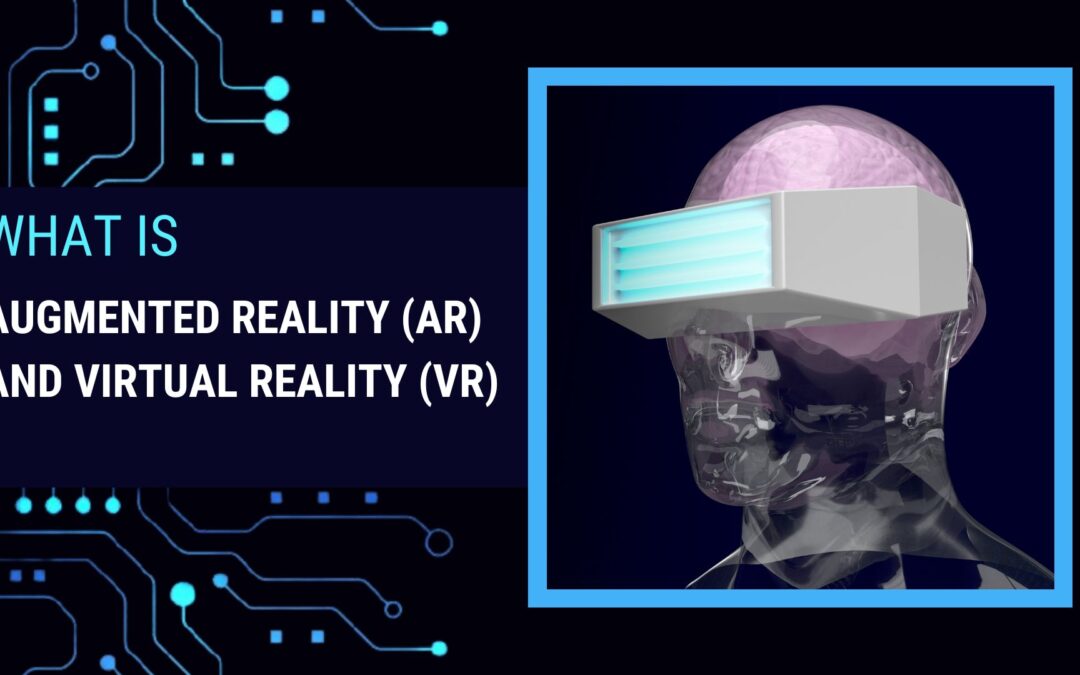
by admin | Aug 31, 2023 | Augmented Reality and Virtual Reality, Technology
What is Augmented Reality (AR) and Virtual Reality (VR)
Augmented Reality (AR) and Virtual Reality (VR) are immersive technologies that alter our perception of the real world and create interactive digital experiences. While they share similarities, they serve different purposes and offer distinct user experiences.
Augmented Reality (AR):
Augmented Reality involves overlaying digital content, such as images, videos, and 3D models, onto the real-world environment. This is typically done through devices like smartphones, tablets, AR glasses, or even heads-up displays in vehicles. AR enhances our perception of reality by adding virtual elements that interact with and augment the physical world.
Key features of AR include:
- Real-time Interaction: AR enables users to interact with digital objects in real-time within their immediate environment.
- Integration with Reality: Virtual objects are integrated into the user’s actual surroundings, making it possible to blend the virtual and real worlds.
- Applications: AR has applications in various fields, from gaming and entertainment to education, healthcare, navigation, architecture, and marketing.
- Examples: Pokémon GO is a popular AR game that lets players catch virtual creatures in the real world. AR navigation apps overlay directions onto the live view from a smartphone’s camera.
Virtual Reality (VR):
Virtual Reality, on the other hand, creates an entirely simulated environment that users can interact with. VR typically requires specialized hardware, such as VR headsets, to fully immerse users in the virtual world. In VR, users are completely isolated from the physical environment and are surrounded by computer-generated content.
Key features of VR include:
- Immersive Environment: VR provides a fully immersive experience, transporting users to a virtual environment where they can interact with objects and surroundings.
- Isolation from Reality: Users wearing VR headsets are visually and often aurally cut off from the real world, allowing them to focus entirely on the virtual experience.
- Applications: VR finds applications in gaming, training simulations (e.g., flight simulators), virtual tourism, medical training, architectural visualization, and more.
- Examples: Oculus Rift, HTC Vive, and PlayStation VR are popular VR headset platforms used for gaming and other immersive experiences.
In summary, while both AR and VR offer immersive experiences, AR enhances the real world by overlaying digital content it, and VR creates a completely virtual environment that users can interact with. Both technologies have the potential to transform industries and create new ways for people to engage with digital content and information.
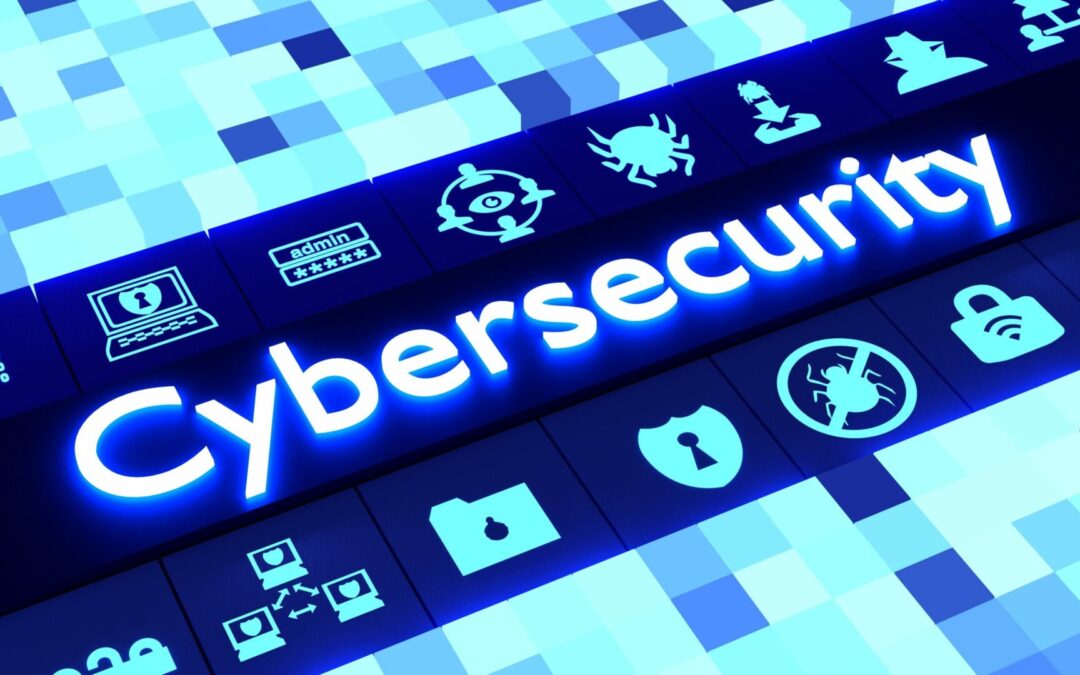
by admin | Aug 31, 2023 | Cybersecurity, Technology
what is Cybersecurity?
Cybersecurity refers to the practice of protecting computer systems, networks, data, and digital assets from various forms of cyber threats, attacks, and unauthorized access. It encompasses a wide range of technologies, processes, practices, and measures designed to ensure the confidentiality, integrity, and availability of digital information.
The primary goal of cybersecurity is to safeguard information and digital resources from:
- Cyberattacks: Deliberate and malicious attempts to breach or compromise computer systems, networks, or data. Examples include malware (viruses, worms, ransomware), phishing attacks, and denial-of-service (DoS) attacks.
- Data Breaches: Unauthorized access to sensitive data, leading to its theft or exposure. This could involve personal information, financial data, intellectual property, and more.
- Hacking: Unauthorized intrusion into computer systems, often with the intent to manipulate or steal data, disrupt operations, or gain control.
- Identity Theft: Unauthorized acquisition and misuse of personal information, often for financial gain.
- Espionage: Cyber activities conducted by governments, organizations, or individuals to gather intelligence or confidential information from others.
- Cyberterrorism: The use of cyber attacks to create fear, disrupt critical infrastructure, and cause chaos, often with political or ideological motives.
Key components and practices of cybersecurity include:
- Network Security: Implementing measures to protect networks from unauthorized access, attacks, and intrusions. This includes using firewalls, intrusion detection/prevention systems, and secure network configurations.
- Endpoint Security: Protecting individual devices (endpoints) such as computers, smartphones, and IoT devices. This involves using antivirus software, encryption, and device management solutions.
- Data Encryption: Converting sensitive data into a coded format to prevent unauthorized access. Encryption ensures that even if data is stolen, it remains unreadable without the appropriate decryption key.
- Access Control: Limiting and controlling user access to systems and data based on roles, responsibilities, and the principle of least privilege.
- Authentication and Authorization: Verifying the identity of users and granting them appropriate access permissions based on their roles and responsibilities.
- Security Awareness Training: Educating employees and users about cybersecurity best practices to help prevent social engineering attacks like phishing.
- Incident Response and Recovery: Developing strategies and plans to respond to and recover from cybersecurity incidents, minimizing damage and downtime.
- Vulnerability Management: Identifying and addressing vulnerabilities in software, systems, and networks before they can be exploited by attackers.
- Penetration Testing: Ethical hacking conducted to identify weaknesses in a system’s security, helping organizations proactively address vulnerabilities.
- Security Policies and Procedures: Establishing clear guidelines, protocols, and practices to ensure consistent and effective cybersecurity measures across an organization.
Given the growing reliance on digital systems and the increasing sophistication of cyber threats, cybersecurity has become a critical concern for individuals, businesses, governments, and organizations of all sizes. It’s a constantly evolving field that requires continuous learning and adaptation to stay ahead of emerging threats and vulnerabilities.
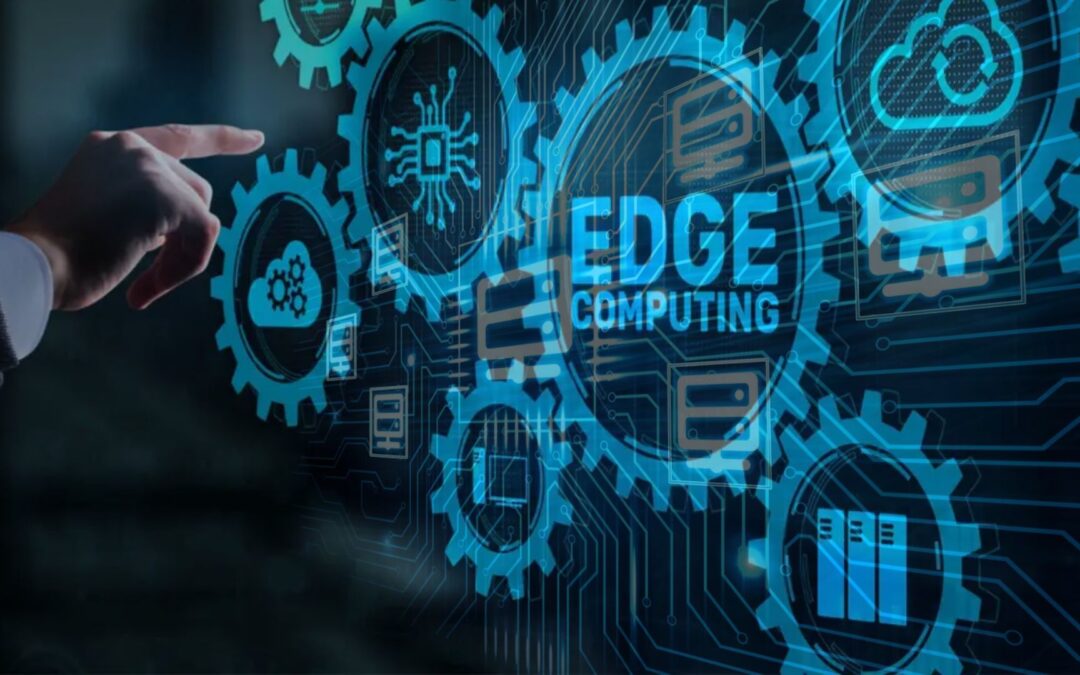
by admin | Aug 31, 2023 | Edge Computing, Technology
what is Edge Computing?
Edge computing is a technology paradigm that involves processing data closer to the source of its generation, rather than sending all data to a centralized cloud or data center for processing. This approach aims to reduce latency, improve response times, save bandwidth, and enhance the overall efficiency of data processing and analysis. While it’s not the latest technology (it has been gaining traction over the past few years), it remains a significant and evolving trend in the tech industry.
In traditional cloud computing models, data is sent to a central data center where it’s processed and analyzed. This works well for many applications, but it introduces latency, especially for applications that require real-time or near-real-time processing. Edge computing addresses this challenge by moving some of the processing closer to the “edge” of the network, closer to the devices generating the data.
Key features of edge computing include:
- Low Latency: By processing data locally, edge computing reduces the time it takes for data to travel back and forth between devices and a remote data center, resulting in faster response times.
- Bandwidth Savings: Sending only relevant or summarized data to the cloud instead of raw data reduces the amount of data that needs to be transmitted over the network, saving bandwidth and potentially reducing costs.
- Data Privacy and Security: Processing sensitive or private data locally can help maintain better control over data and mitigate risks associated with transmitting data over long distances.
- Offline Capabilities: Edge devices can continue to operate even when the network connection is lost or unreliable, as they can process data locally.
- Real-time Processing: Edge computing enables real-time processing and analysis of data, which is crucial for applications like IoT, industrial automation, and autonomous vehicles.
- Scalability: Distributing processing across multiple edge devices can help distribute the computational load and improve scalability.
- Reduced Cloud Dependency: While edge computing doesn’t replace cloud computing, it reduces the dependency on the cloud for every computing task.
Applications of edge computing include:
- Internet of Things (IoT): Edge computing is crucial for IoT devices that generate large volumes of data that need to be processed quickly, such as in smart cities, connected vehicles, and industrial sensors.
- Smart Grids: Edge computing can optimize the management and distribution of energy in real time, improving the efficiency of power grids.
- Video Surveillance: Real-time analysis of video feeds from security cameras can be performed at the edge to quickly identify threats or anomalies.
- Autonomous Vehicles: Edge computing enables fast processing of sensor data, allowing autonomous vehicles to make split-second decisions.
- Healthcare: Medical devices can process patient data at the edge to provide real-time insights, especially in critical situations.
- Retail: Edge computing can power personalized customer experiences, such as real-time inventory tracking and targeted advertising.
While edge computing offers numerous benefits, it also presents challenges such as managing a distributed computing environment, ensuring data consistency, and dealing with limited resources on edge devices. As technology continues to evolve, edge computing is likely to remain a crucial component of the broader computing landscape.
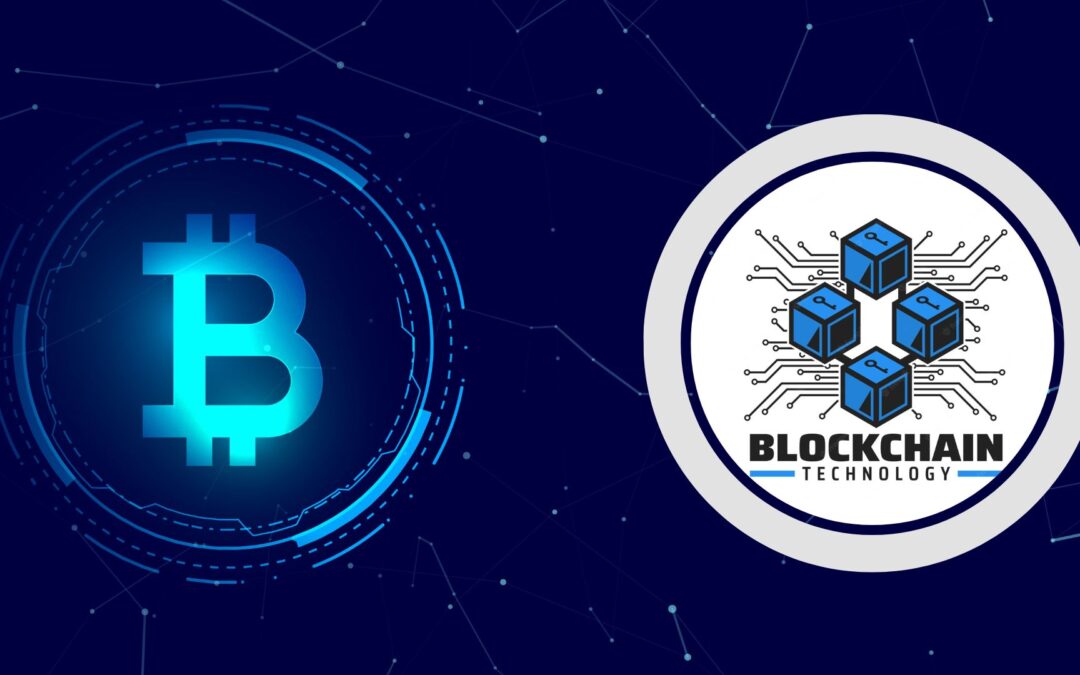
by admin | Aug 31, 2023 | Blockchain
What is Blockchain?
Blockchain is a decentralized and distributed digital ledger technology that records transactions across multiple computers in a way that is secure, transparent, and tamper-resistant. Each transaction, or “block,” is linked to the previous one, forming a chronological chain. This technology gained prominence as the underlying technology for cryptocurrencies like Bitcoin, but its applications have expanded beyond just digital currencies.
The key features of blockchain include:
- Decentralization: Unlike traditional centralized systems, blockchain operates on a network of computers (nodes) where each node has a copy of the entire ledger. This decentralized nature enhances security and eliminates the need for a single controlling authority.
- Transparency: Every participant in the blockchain network has access to the same information. Transactions are visible to all relevant parties, promoting transparency and trust.
- Immutability: Once data is added to the blockchain, it’s extremely difficult to alter or delete. This is achieved through cryptographic hashing and consensus mechanisms, making the blockchain tamper-resistant.
- Security: Transactions in a blockchain are verified through complex cryptographic algorithms, making it difficult for unauthorized parties to alter the data. This enhances the security of the system.
- Consensus Mechanisms: Blockchain networks use consensus algorithms to agree on the state of the ledger. Popular mechanisms include Proof of Work (PoW) and Proof of Stake (PoS), which ensure agreement among network participants.
- Smart Contracts: These are self-executing contracts with the terms directly written into code. They automatically execute actions when predefined conditions are met, reducing the need for intermediaries.
The role of blockchain in the latest technology landscape is significant and expanding:
- Cryptocurrencies and Finance: Blockchain’s most well-known application is in the realm of cryptocurrencies. It enables secure and transparent transactions without the need for intermediaries like banks.
- Supply Chain Management: Blockchain can provide end-to-end visibility in supply chains by recording every step of a product’s journey, reducing fraud, ensuring product authenticity, and improving traceability.
- Digital Identity: Blockchain can be used to create secure and tamper-proof digital identities, providing individuals with control over their personal data and reducing identity theft.
- Healthcare: It can improve the interoperability and security of electronic health records, ensuring accurate patient data sharing across healthcare providers while maintaining privacy.
- Voting Systems: Blockchain-based voting systems offer enhanced security, transparency, and tamper-proof record-keeping for elections.
- Real Estate and Land Title Records: Blockchain can simplify and streamline property transactions by providing a transparent and secure way to record ownership and transfer of real estate.
- Energy Trading and Grid Management: Blockchain can enable peer-to-peer energy trading, allowing consumers to buy and sell energy directly to one another.
- Cross-Border Payments: Blockchain can facilitate faster, cheaper, and more transparent cross-border transactions by eliminating intermediaries.
- Intellectual Property Protection: Blockchain can help creators prove ownership and protect their intellectual property rights.
- Digital Art and Collectibles: Blockchain technology is used to create verifiable scarcity and provenance for digital art and collectibles.
The role of blockchain in these areas is to create trust, security, and efficiency by eliminating intermediaries, ensuring data integrity, and enabling new models of interaction. However, it’s important to note that while blockchain holds significant promise, it’s not a solution for all problems and has its own challenges, including scalability and energy consumption.
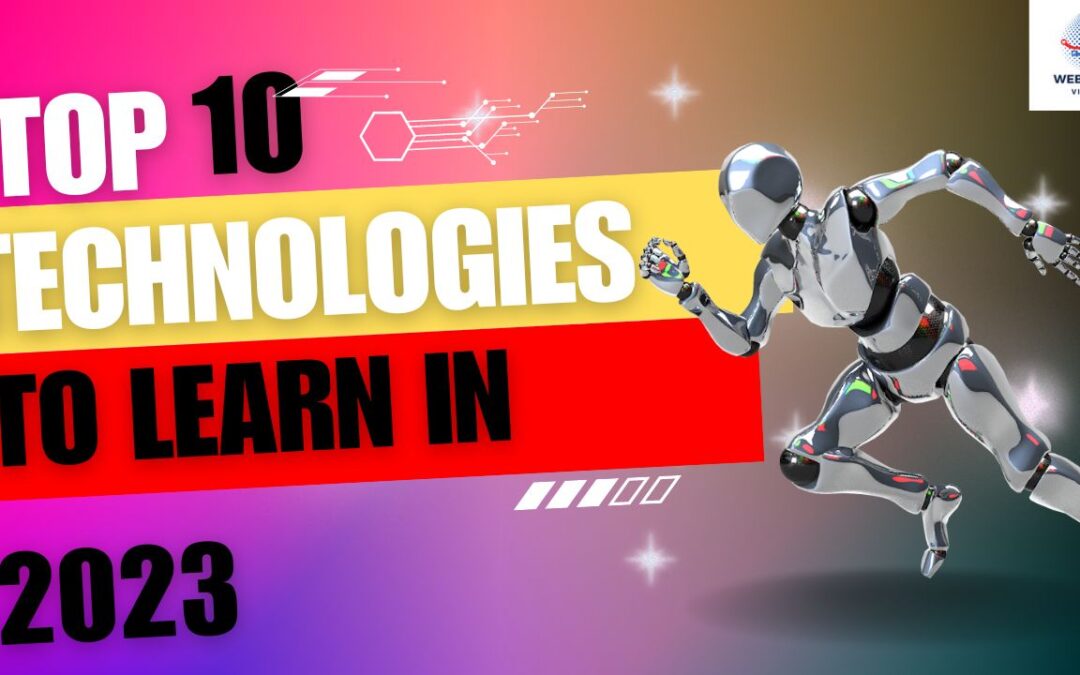
by admin | Aug 31, 2023 | Technology, Top 10 Technologies to Learn in 2023
Top 10 Technologies to Learn in 2023
The Golden word of a wise man is “One machine can do the work of fifty ordinary men and no machine can do the work of one extraordinary man”.Furthermore, to become unprecedented in the 21st century you must be refreshed with the ongoing innovation of acquiring advancement in IT.
Some technologies were gaining momentum around that time and are likely to still be relevant in 2023. Here’s a list of the top 10 technologies that you might consider learning in 2023:
AI and ML continue to drive innovation across industries, from healthcare to finance. Learning how to build and deploy AI models could be immensely beneficial.
Blockchain technology is expanding beyond cryptocurrencies, finding applications in supply chain management, digital identity verification, and more.
The rollout of 5G networks is expected to continue, offering increased data speeds and low latency, enabling new possibilities in IoT, AR/VR, and more.
With the growth of IoT, edge computing is becoming crucial. It involves processing data closer to the source rather than in centralized data centers.
As digital threats continue to evolve, expertise in cybersecurity will remain essential to protect sensitive information and systems.
Although still in its early stages, quantum computing has the potential to revolutionize various fields by solving complex problems that are currently infeasible for classical computers.
AR and VR are finding applications in gaming, education, training, and even remote work, creating a demand for developers with expertise in these areas.
IoT involves connecting everyday devices to the internet, enabling them to collect and exchange data. It’s a field with immense growth potential.
With the rise of chatbots, virtual assistants, and language-based AI applications, NLP skills are highly valuable.
As sustainability becomes a bigger focus, skills in renewable energy technologies like solar, wind, and energy storage could be in high demand.
Remember that the relevance of these technologies can vary based on your interests, career goals, and the industries you’re involved in. It’s also important to stay updated with the latest trends and advancements in the tech world as you continue your learning journey.





